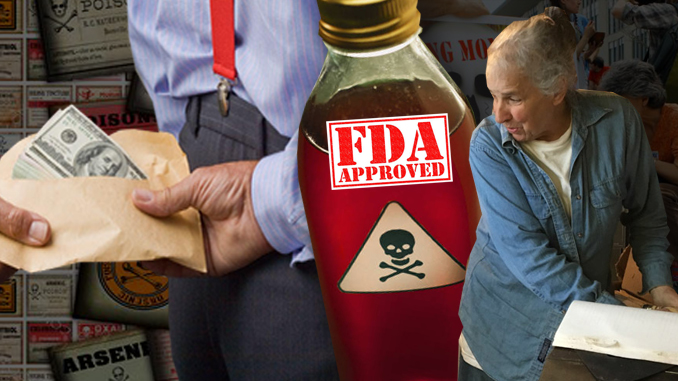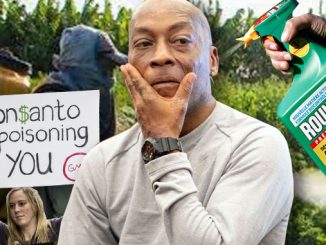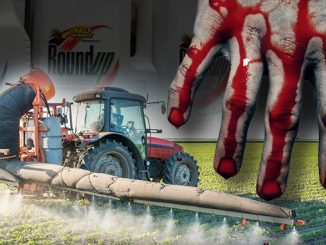
“Poison Papers” is the sadly appropriate name for an online compilation of documents that reveal decades of government cover-ups on the use of toxic chemicals, collusion between the chemical industry and regulatory agencies, deceit, incompetence, fraud, and ultimately an utter lack of concern for life itself.
By James Spounias
Carol Van Strum desired a simple life when she and her family moved to Oregon’s idyllic Siuslaw National Forest in 1974. Little did she know that she would become a curator of information indicting powerful chemical companies and government agencies, which resulted in the creation of an online library known as the “Poison Papers,” or that she would suffer personal tragedy as well.
Published by the Center for Media and Democracy and the Bioscience Resource Project, the Poison Papers lay out “a 40-year history of deceit and collusion involving the chemical industry and the regulatory agencies that were supposed to be protecting human health and the environment,” according to Peter von Stackelberg, a journalist who helped establish the online collection, as reported by Sharon Lerner on the news website “TheIntercept.com.”
SINGLE MALE over 50, Polish-Italian, non-smoker, in good shape, articulate, attentive seeking a single female, slender, intelligent, down-to-earth, who’s looking for love and willing to relocate. Serious calls 727-492-8164.
The saga began in the 1970s when Ms. Van Strum asked U.S. Forest Service employees to stop spraying herbicides in the area of her home. In one incident, her children had been directly doused as they fished in a nearby river.
Ms. Lerner reported: “Immediately after they were sprayed, Van Strum’s children developed nosebleeds, bloody diarrhea, and headaches, and many of their neighbors fell sick, too. Several women who lived in the area had miscarriages shortly after incidents of spraying. Locals described finding animals that had died or had bizarre deformities—ducks with backward-facing feet, birds with misshapen beaks, and blinded elk; cats and dogs that had been exposed began bleeding from their eyes and ears. At a community meeting, residents decided to write to the Forest Service detailing the effects of the spraying they had witnessed.”
Ms. Van Strum thought, as any reasonable American would, once the agency knew how detrimental the spraying was “they wouldn’t do it anymore.”
She discovered that the herbicide used by the Forest Service contained an active ingredient used in Agent Orange, which even the U.S. military stopped using in Vietnam after it became known it caused serious harm to humans and the environment. Ms. Lerner reported that “between 1972 and 1977, the Forest Service sprayed 20,000 pounds of 2,4,5-T (an active ingredient in Agent Orange) in the 1,600-square-mile area that included Van Strum’s house and the nearby town of Alsea.”
The Forest Service refused Ms. Van Strum’s request, so she, along with her neighbors, took them to court, which resulted in a victory of sorts. A temporary ban was issued on the use of 2,4,5-T in 1977, and it was ultimately stopped in 1983, according to Ms. Lerner.
“We didn’t think of ourselves as environmentalists; that wasn’t even a word back then. We just didn’t want to be poisoned,” Ms. Van Strum said.
Tragically, Ms. Van Strum’s four children died in a 1997 home fire, which spread suspiciously quickly and was not investigated. Ms. Lerner reported: “Firefighters who came to the scene said the fact that the whole house had burned so quickly pointed to the possibility of arson. But an investigation of the causes of the fire was never completed.”
Today, Ms. Van Strum lives in an outbuilding next to the cleared area where her home once stood and has accepted the fact she will “never really know” whether foul play was involved.
Jonathan Latham, Ph.D., cofounder and director of the Bioscience Resource Project and director of the Poison Papers, explains how things got to the point where bureaucratic agencies, such as the Environmental Protection Agency (EPA), don’t care about the public they are charged with protecting.
When agency scientists discover wrongdoing, such as fraud by major chemical companies, they “don’t do anything about it because they have to pass it up the line” to their senior administrator (and ultimately) to the president, who will have to take a stand against a toxic chemical and its producer, Dr. Latham told Todd Zwillich on WNCY radio on July 31.

Latham said bad news doesn’t travel up the agency, leaving a “closet full of skeletons,” which aptly describes the Poison Papers.
For instance, a company called Industrial Bio-Test Laboratories (IBT) was responsible for up to 40% of all chemical safety tests.
Monsanto and other giants used this testing company, which got some media attention in light of a negative report issued by the Food and Drug Administration. Top bureaucrats had to “do something.”
Rebekah Wilce reported on “independentsciencenews.com” that testing animals would decompose so quickly that “their bodies oozed through wire cage bottoms and lay in purple puddles on the dropping trays” and that IBT invented an acronym “TBD,” later discovered to mean “too badly decomposed.”
Poison Papers documents reveal a secret meeting with the EPA, Canada’s Health Protection Branch, and top chemical companies on Oct. 3, 1978 at the Howard Johnson Motor Inn in Arlington, Va.
Government bureaucrats “kicked the can down the road,” giving IBT a chance to resubmit studies, according to Latham. He noted that, “Meanwhile, you’re not telling the public that the chemicals that they’re using in their households and yards and that are in their food have unsound tests behind them.. . . In some cases, 100% of the tests were unsound.”
Those who wonder what is causing so much illness, such as cancer, dementia, and other problems, may have an answer, and it lies in chemical exposure, said Latham.
The evidence continues to mount daily against big business and government.
If the words of those who poison and the bureaucrats who cover up and do nothing won’t convince us we need to take action, what will?
James Spounias is the president of Carotec Inc., originally founded by renowned radio show host and alternative health expert Tom Valentine. To receive a free issue of Carotec Health Report—a monthly newsletter loaded with well-researched and reliable alternative health information—please write Carotec, P.O. Box 9919, Naples, FL 34101 or call 1-800-522-4279. Also included will be a list of the high-quality health supplements Carotec recommends.





